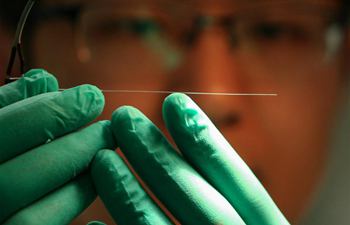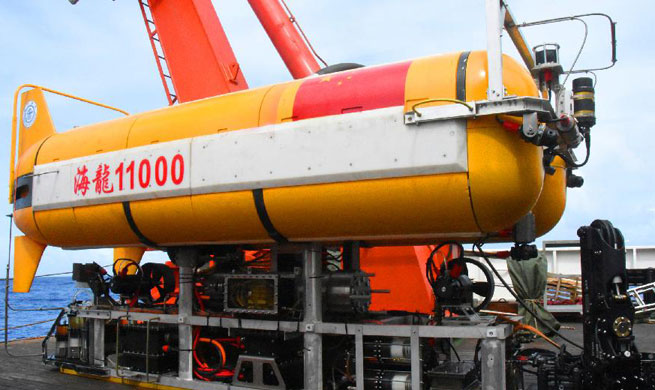WASHINGTON, March 30 (Xinhua) -- German scientists have identified the physical mechanism that enables a widespread bacterial pathogen to adhere tightly to the tissues of its human host, laying foundation for developing novel therapies for its infections.
The study, published in the latest released journal Science, has shown that bacterial pathogens have evolved highly effective strategies that enable them to adhere to target cells and niches in the tissues of their host organisms, even making use of relatively unfamiliar physical principles.
Researchers with Ludwig-Maximilians-Universitaet (LMU) in Munich have uncovered the mechanism that permits the bacterium Staphyloccus epidermidis to bind so tenaciously to host tissues.
Utilizing atomic force microscopy, Lukas Milles, Hermann Gaub and their colleagues measured the binding force between a staphylococcal adhesion protein and its cognate ligand at the single-molecule level in vitro, and calculated the contributions of all of the atoms involved in the interaction on an supercomputer at the University of Illinois.
"The mechanical binding force that keeps the components of a single complex together amounts to more than 2 nanonewtons (nN). This is an extraordinary value for a non-covalent interaction, comparable to the strength of the covalent bonds between atoms, which are the most stable molecular bonds we know of," said Gaub.
According to Gaub, thanks to the geometry of the interaction, the adhesion protein forms a dense network of non-covalent hydrogen bonds with its ligand.
Moreover, this network is mediated by the peptide bonds that make up the repeating backbone of the protein, rather than by the variable side-chains that differentiate its amino-acid subunits, leading to a stiffening of each hydrogen bond.
"This kind of structure can withstand extreme stresses, because all of the individual bonds must be broken at once in order to separate the complex," said Milles.
Milles said the mechanism is analogous to the interaction between the many tiny hooks and loops on two Velcro strips, which are extremely difficult to separate when pulled from opposite ends.
The mechanism based on the peptide backbones of the interacting molecules is common to all proteins, so this level of stability can be achieved in interactions with a broad spectrum of targets.
In other words, the extremely high mechanical strength of the interaction is largely independent of both the amino-acid sequence of the adhesion protein and the biochemical properties of the target peptide.
Staphylococci are responsible for a wide range of infections in animals and in humans.
"In the search for ways to block invasive infections, a better understanding of the physical principles involved is vital," said Hermann Gaub.

















